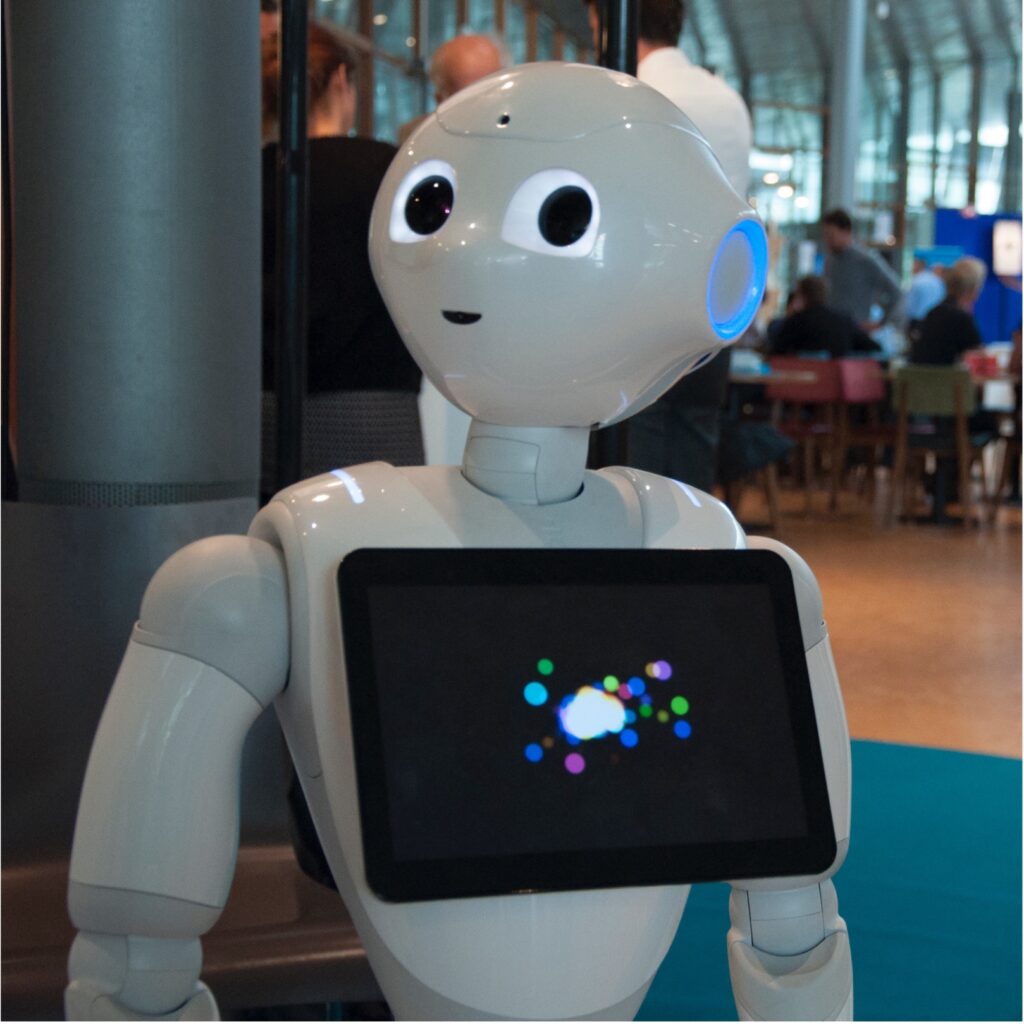China Innovation Snapshots is an initiative of the Netherlands Innovation Network China that gives short insights into China’s fast-changing innovation landscape. Each article looks at an innovative sector or topic with a lot of science and technology related developments, such as artificial intelligence, quantum, or energy materials. The goal is to give a quick and easy overview of key developments, main players, and new trends. Whether you are a policymaker, scientist, or just interested in the topic, these snapshots help you stay up to date on China’s latest innovation developments.
There will be more “DeepSeek moments”: China’s Growing Role in AI
In recent months, the Chinese AI ecosystem has gained global attention with the release of Deepseek’s R1 reasoning model and the AI agent Manus recently released by Butterfly Effect. However, these are only two of the many significant developments in China’s rapidly evolving AI sector. China’s private investments in AI are second to the US, but China leads in AI research output and patent applications. This makes China the second-largest AI market.
Chinese AI talent is a big driver of progress in AI worldwide. Of all top AI professionals at American companies, 38% is of Chinese origin. This makes the US more successful than Europe in attracting and retaining AI expertise.
The country’s AI ecosystem is highly competitive, consisting not only of Big Tech firms such as Alibaba and Baidu but also of fast-growing AI unicorns like Zhipu AI and Moonshot, alongside innovative startups like DeepSeek, Manus and Modelbest. At the same time a large portion of the world’s top AI talent comes from China. DeepSeek, stands out within China’s AI landscape due to its research-driven, flat organisational structure, which differs from the more commercially oriented approaches of its competitors. The launch of its V2 model in May 2024 already triggered a price war in the Chinese AI market, forcing other companies to lower the costs of their own models.
With strong investment, government support, and an increasingly advanced AI ecosystem, more breakthroughs similar to DeepSeek’s are likely to emerge in China’s AI sector in the near future.
At the same time, there are concerns that China’s AI expansion could slow if further restrictions on advanced semiconductors raise the cost of training and running large models. Local chipmakers still trail behind the best American technology, making reliable access to high-performance hardware a potential bottleneck for Chinese AI firms.
Technological Leadership and Self-Sufficiency in AI
Achieving technological leadership and increasing self-sufficiency in high-tech sectors has been a major priority for the Chinese government for many years. This focus is strongly reflected in the 14th Five-Year Plan, which will end this year. The Chinese government has therefore made large investments in AI, creating a strong foundation for further technological breakthroughs and innovations.
China is also actively involved in international discussions on AI governance. China introduced the Global AI Governance Initiative, to which it frequently refers in international discussions.
The Chinese government’s strong commitment to AI was also evident during key meetings earlier this year. On 20 January, DeepSeek’s CEO Liang Wenfeng participated in a roundtable discussion with Premier Li Qiang. Later, on 17 February, he took part in a widely discussed private sector symposium led by President Xi Jinping. This event aimed to send a clear message of support for private companies. Other prominent figures, including Jack Ma (founder of Alibaba) and Ren Zhengfei (founder of Huawei), were also invited. These discussions played a role in shaping policies ahead of the Two Sessions in March 2025, where the government presented its plans to the National People’s Congress (NPC) and the Chinese People’s Political Consultative Conference (CPPCC).
The Chinese AI ecosystem and DeepSeek
The Chinese AI ecosystem has gained significant global attention with the launch of DeepSeek’s R1 AI model. The latest AI models from China are now reaching performance levels close to those from the United States.
The DeepSeek breakthrough should not have come as a big surprise. China invests heavily in AI, has a large domestic market, a highly competitive AI ecosystem, and a wealth of talent. Over the past three years, generative AI has also rapidly improved in quality and usability. DeepSeek’s breakthrough shows that Chinese AI companies are competitive and operating at or close to the cutting edge.
Shortly after DeepSeek’s R1 launch, other Chinese companies also introduced new AI models. Alibaba’s Qwen 2.5-Max and Moonshot’s Kimi k1.5 have similar capabilities to DeepSeek’s R1 and other reasoning models. Meanwhile, Douyin’s (Bytedance’s parent company) Doubao and Tencent’s Hunyuan3d-2.0 are competing with top-tier generative AI models. A few weeks later Butterfly effect released Manus, an AI agent competing with similar AI agents from American companies.
Just a few hours after the launch of Manus on 6th March, a huge number of visitors caused its registration website to crash. Butterfly Effect, the company behind it, claims Manus’s technology is even better than OpenAI’s ChatGPT. Due to the high demand, the firm only allows sign-ups by invitation. Some people are even selling registration codes for profit.
Since OpenAI launched ChatGPT in November 2022 and Baidu released its ERNIE Bot in March 2023, many Chinese companies and research institutions have entered the AI race. This intense competition is often called “the battle of 100 models.” Within this competition, several startups have emerged with valuations exceeding one billion dollars. These companies, known as the “six little dragons,” include Zhipu AI, MiniMax, Moonshot AI, Baichuan AI, 01.AI, and Stepfun.
At the same time, major Chinese internet companies such as Baidu, Alibaba, Tencent, and Bytedance continue to develop their own AI models. They also actively invest in AI startups. For example, Alibaba has invested in five of the six “little dragons,” including Moonshot AI, MiniMax, Zhipu AI, Baichuan AI, and 01.AI.
Many large tech firms also hope to profit from the surge in AI demand through their cloud computing businesses. In February, Alibaba announced it would spend about $53 billion over three years to build data centres for AI cloud services. This is more than the company spent in the past decade.
Despite the strong AI ecosystem in China, many Chinese AI companies are still primarily focused on the domestic market. However, this could change in the future, just as it did in the automotive industry, where Chinese firms first captured the domestic market before expanding internationally. Another concern for Chinese AI tech leaders is the access to enough quality AI chips to maintain a strong position in the global AI market.
A major factor that could slow China’s AI boom is the difficulty of having access to advanced semiconductors. The United States has already banned selling Nvidia’s most powerful AI chips to China, so Chinese firms must use H20 chips, which are less advanced. Although local chipmakers such as Cambricon, Enflame, and Huawei are producing some of the required hardware, they still are behind top American technology in performance. SMIC, which is China’s leading semiconductor company, has limited manufacturing capacity and cannot create the highest-end chips. Even the top AI chips from Huawei do not match Nvidia in terms of capability, and it might take a few years before Huawei’s hardware and software become ready for companies like DeepSeek to rely on them completely.

China as the Second AI Economy in the World
In terms of private investment, China is the second-largest AI market globally. In 2023, private funding for AI in China reached 7.8 billion USD. Compared to the private investments in the United States of 67 billion USD this is a small amount. Government investments provide a substantial amount of funding for AI in China. For example in January 2024, the Chinese Government announced the creation of a National AI Industry Investment Fund, which has an initial capital of over 8 billion USD. On 6th March, the Chinese government also announced a venture capital fund of 1 trillion yuan (about 140 billion USD) to support tech investments.
China has made significant progress in AI research and innovation. The number of scientific publications on AI from China grew from 26,300 in 2017 to 86,500 in 2023. This is more than double the number from the United States, which had 37,500 publications in the same year. In comparison, the Netherlands had 3,700 AI-related scientific publications in 2023. While China’s Citation Impact (a measure of research quality) is generally lower than in other regions, institutions such as Tsinghua University and Peking Normal University are among the world’s leaders in AI research.
China is also leading in AI patent applications. In 2022, Chinese companies filed 44,000 AI-related patents, making up more than 60% of global AI patent applications. In contrast, the United States accounted for approximately 15,800 AI patent applications (21% of the total), while the EU and the UK together represented just around 2% of global AI-related publications.
China’s AI Talent and Workforce Challenges
China is currently the largest supplier of AI talent worldwide. According to research from the think tank Macropolo, the number of top Chinese AI professionals (the top 20% of AI researchers working in academia or the AI industry) has grown rapidly in recent years. Currently, 38% of top AI experts working in US companies and institutions are Chinese. Currently, the United States benefits the most from Chinese AI talent, strengthening its own AI industry.
Despite China’s large AI talent pool, there are signs that the country is facing a growing shortage of AI professionals. It is expected that China’s demand for AI-skilled workers will increase significantly in the coming years, while the supply of talent will not fully meet the demand. As a result, the Chinese government may increase efforts to encourage the return of Chinese AI professionals currently working abroad.
DeepSeek: A Unique Player in the Chinese AI Landscape
Among Chinese AI companies, DeepSeek stands out as an unconventional player. The company is led by CEO Liang Wenfeng and operates with a research-driven approach rather than focusing on commercialisation. DeepSeek is also unusual in that it relies exclusively on Chinese talent, with most of its employees having no prior study or work experience abroad.
The company has access to large-scale computing power, using thousands of Nvidia AI chips. It has also played a key role in the pricing competition in the Chinese AI market. The launch of DeepSeek’s V2 model in May 2024 triggered a price war, leading to significant cost reductions for AI services from companies like Zhipu AI, Alibaba, and Baidu.
Unlike many AI companies that rely on external funding, DeepSeek claims to be profitable. Its AI models use computing power more efficiently than its competitors, requiring significantly less memory to achieve similar results. This sets it apart in the increasingly competitive Chinese AI market.

